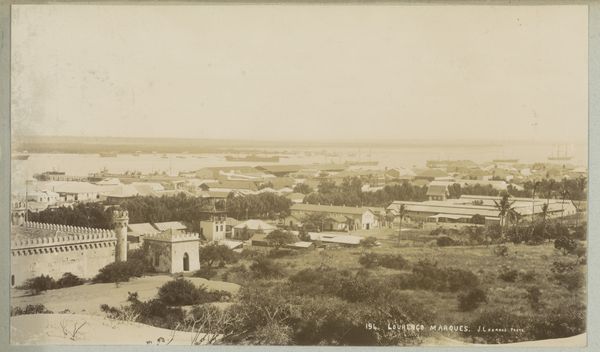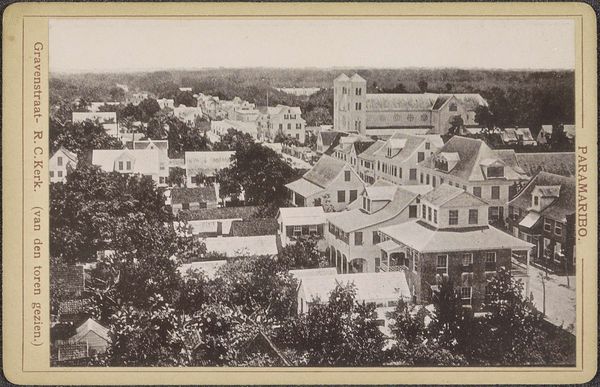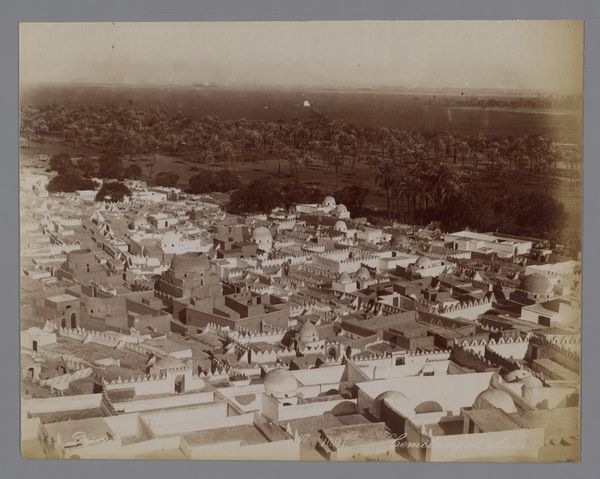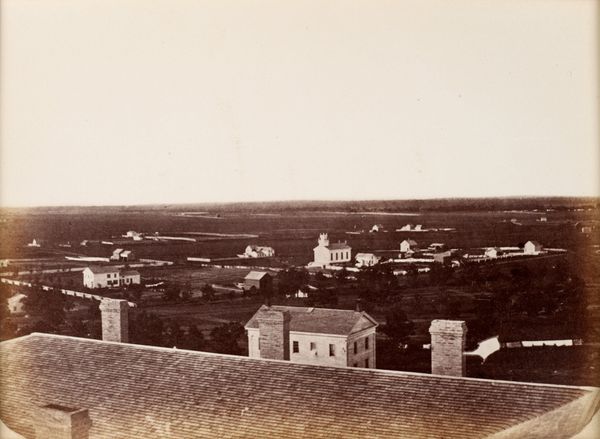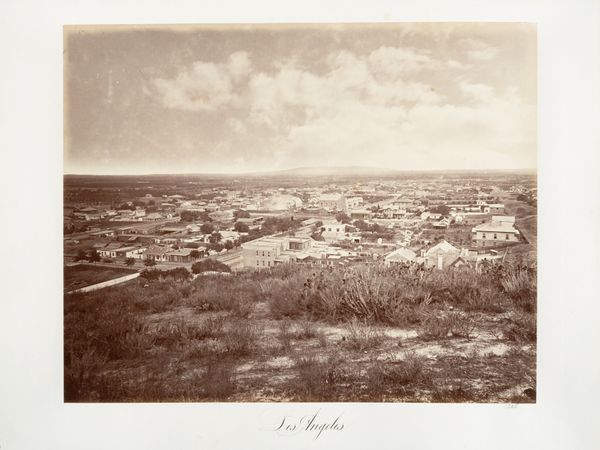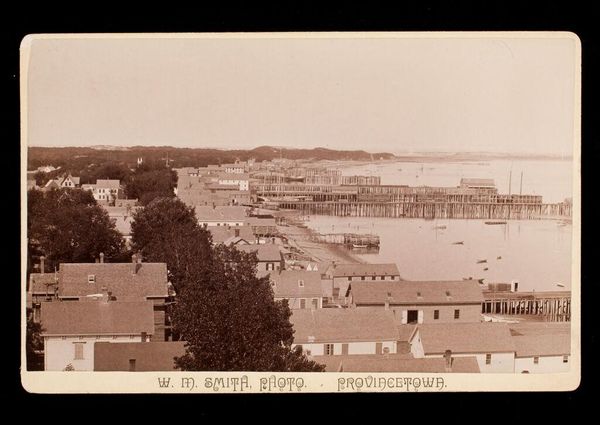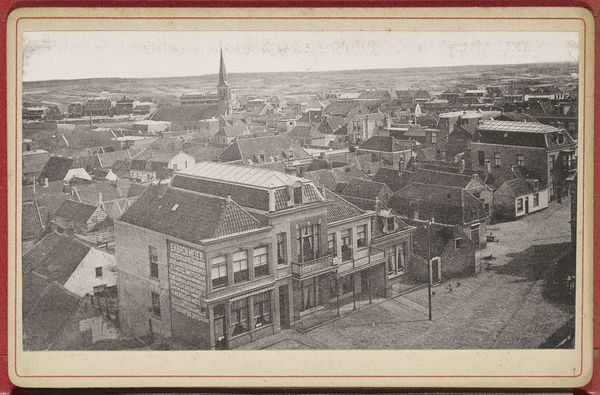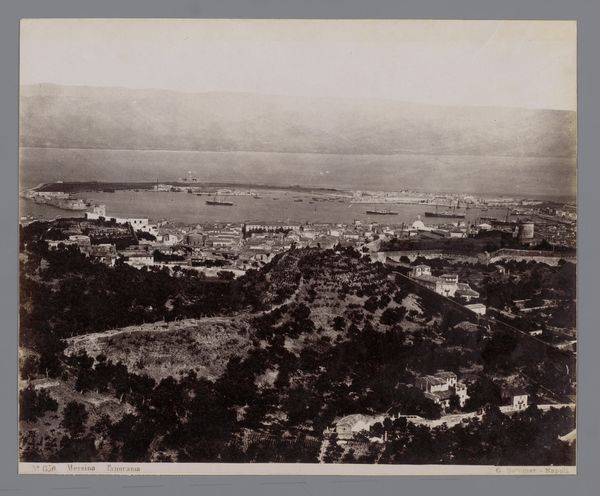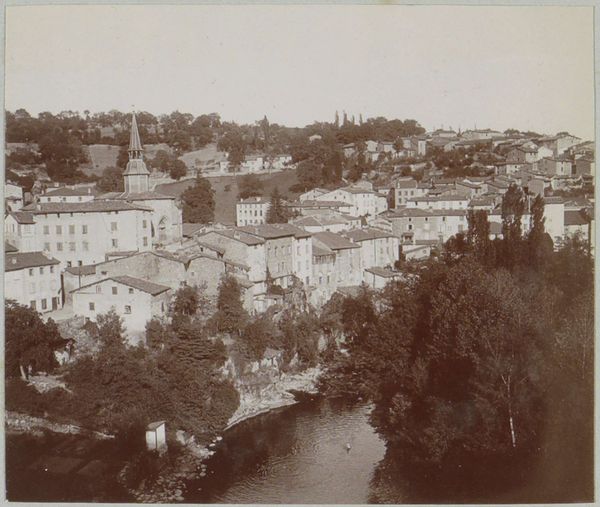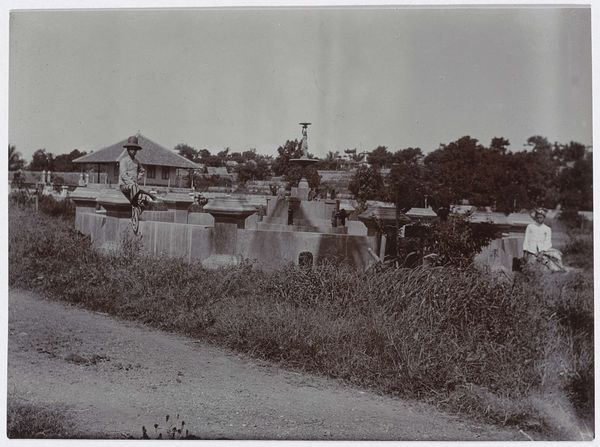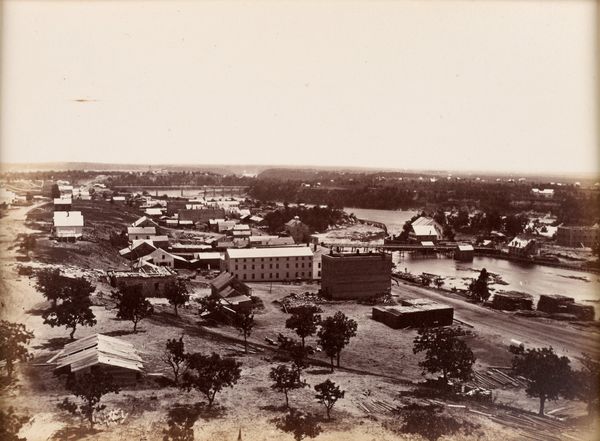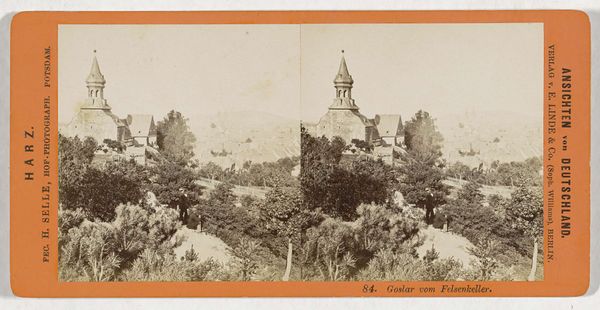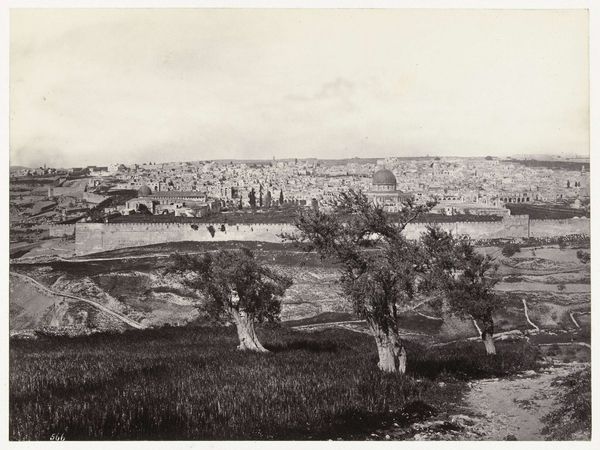
Gezicht op een bocht in de Surinamerivier in Paramaribo vanaf een toren before 1927
0:00
0:00
photography, gelatin-silver-print
#
dutch-golden-age
#
ink paper printed
#
old engraving style
#
landscape
#
photography
#
historical photography
#
gelatin-silver-print
#
19th century
#
cityscape
Dimensions: height 105 mm, width 165 mm
Copyright: Rijks Museum: Open Domain
Curator: Here we have an interesting gelatin-silver print dating from before 1927 by Eugen Klein. The artwork, residing here at the Rijksmuseum, is titled “View of a bend in the Suriname River in Paramaribo from a tower”. What strikes you initially about this historical photograph? Editor: My first impression is a kind of ordered, if somewhat subdued, panorama. The tight repetition of rooftops spreads outwards to meet the river, and then fades almost into nothing, giving me a sense of both enclosure and open space. Curator: Absolutely. The composition is striking, particularly the layering effect achieved through the varying heights of the buildings and the strategic placement of the trees. Look at the subtle gradations of tone and the careful balance of light and shadow that structure the composition. The way that tonal range defines architectural elements like rooflines or walls allows us to perceive complex volumes despite the flatness inherent to the photograph. Editor: It also feels important to consider the socio-political context: Suriname as a former Dutch colony, the tower's gaze as a possible symbol of colonial power, the photographic process as itself an instrument of documentation and control. This photograph does more than simply show us a city; it hints at histories of resource extraction and political dominion. Curator: Those broader readings are not unhelpful. But what I find more compelling are the formal tensions created by this seemingly straightforward composition. Note the artist’s expert handling of perspective, flattening the foreground to enhance a feeling of depth. I want to further acknowledge the geometric relationships that are constantly established as our eyes take in the photograph’s array of hard lines, the verticals and diagonals which contrast nicely with the curvature of the river. Editor: And beyond the purely aesthetic choices, we also have to reckon with the human impact visible even within the architecture – the marks left by forced labor on display within what seems initially a neutral document of topography. A deeper engagement involves understanding the layers of subjugation enmeshed within Klein's seemingly tranquil depiction. Curator: Certainly, historical interpretations are important for contemporary discussions around representation in visual culture. I believe, however, that if one wants to decode the message of colonial legacy, one cannot simply approach this through iconography or overt symbolism but also consider materiality. Editor: Well, on that note, thank you for elucidating some of the image's key formal characteristics! It adds another lens through which to understand a challenging yet crucial representation of a specific history. Curator: My pleasure. Let's now turn our attention to a later work, shall we?
Comments
No comments
Be the first to comment and join the conversation on the ultimate creative platform.
